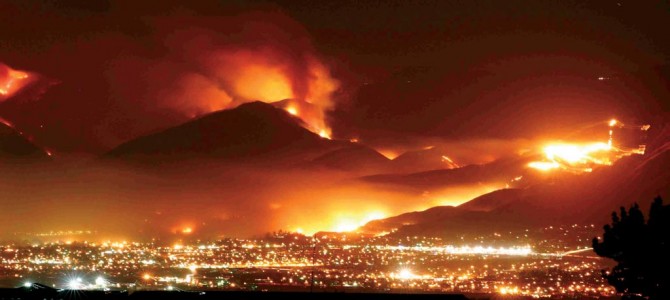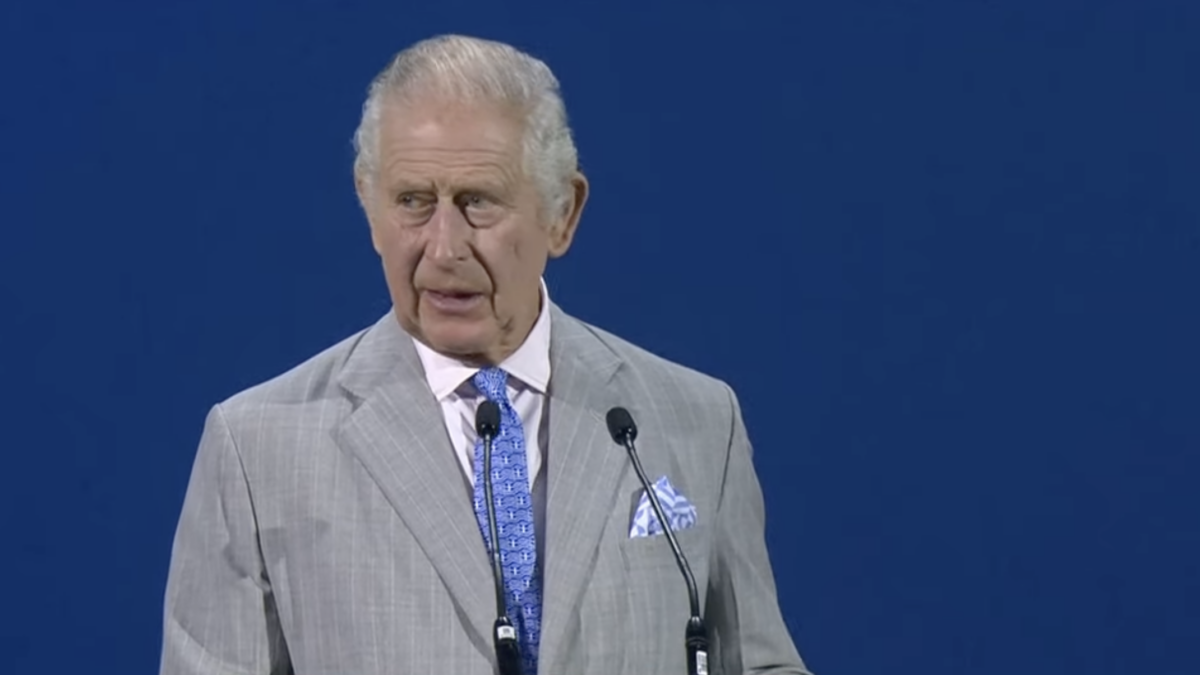
Climate change is a danger to us all and President Trump must be stopped — that’s the chorus we always hear when new climate reports are released and destructive fires ravage California. But is it true?
On Oct. 31, six days before the midterm elections, the journal Nature published an article suggesting that the world’s oceans were absorbing much more heat from climate change than previously calculated. The research, by scientists at Scripps Institution of Oceanography in San Diego, California, and New Jersey’s Princeton University, was obligingly picked up by the national media with alarming headlines such as:
Study: Oceans warming faster than anticipated giving humanity even less time to stave off worst impacts of climate change — San Diego Union-Tribune
Oceans warming faster than anticipated, giving even less time to stave off worst impacts of climate change, study finds — Los Angeles Times
Startling new research finds large buildup of heat in the oceans, suggesting a faster rate of global warming — The Washington Post
Oceans Warming Much Faster Than Thought, Study Finds – The New York Times
Politicians and their campaigns quickly followed suit. California’s senior senator, Dianne Feinstein, running for reelection against a fellow Democrat, tweeted this on Oct. 31: “New science shows the oceans are warming more than we thought. We may have to cut emissions 25% faster to avoid a disastrous 2°C of global warming. It’s time to stop pretending climate change isn’t a real threat—our future depends on it.”
As with many scientific studies in the climate science realm, this one had been weaponized in the service of politics. But the study was deeply flawed. On Election Day, after five days of extensive and frequently breathless media treatment of the ocean warming study, British mathematician Nicholas Lewis posted some doubts on Dr. Judith Curry’s blog:
I was asked for my thoughts on the Resplandy paper as soon as it obtained media coverage. Most commentators appear to have been content to rely on what was said in the press release. However, being a scientist, I thought it appropriate to read the paper itself, and if possible look at its data, before forming a view.
… A quick review of the first page of the paper was sufficient to raise doubts as to the accuracy of its results. Just a few hours of analysis and calculations, based only on published information, was sufficient to uncover apparently serious (but surely inadvertent) errors in the underlying calculations.
Soon, the authors of the study admitted to fundamental errors in math that unraveled their frightening conclusions. Many of the stories in the mass media were corrected and, in some cases, editors felt the need to change their headlines. The New York Times now heads their shortened story from Oct. 31 with the pedestrian, “Scientists Find a New Way to Take the Oceans’ Temperature.”
Then, on Nov. 8, California’s deadliest wildfires in modern history ignited at both ends of the state. Driven by a common weather condition that brings high winds and dry air to the state, the fires quickly burned out of control, consuming 230,000 acres and killing at least 66 people, with more than 600 still missing. Two days later, President Trump weighed in with a tweet, as he did over the summer during California’s last bout with wildfires, blaming “gross mismanagement of the forests” as a cause of their destructiveness.
As before, the reaction from California was swift, with climate change fingered as the culprit. Rocker Neil Young and his wife, actress and environmentalist Daryl Hannah, lost their Malibu house to the Woolsey Fire. Young criticized Trump on his website: “California is vulnerable — not because of poor forest management … As a matter of fact this is not a forest fire that rages on as I write this. We are vulnerable because of Climate Change; the extreme weather events and our extended drought is part of it …”
Yet Young, Hannah and at least a dozen other celebrities who lost their homes lived in a region known for regular fires. Much of California’s southern coast is covered by brush known as chaparral. As the Wikipedia entry on chaparral correctly notes: “In its natural state, chaparral is characterized by infrequent fires, with intervals ranging between 10–15 years and over a hundred years … These plants are highly flammable during the late summer and autumn months when conditions are characteristically hot and dry.”
I witnessed this firsthand in 1993 when the Laguna Beach fire destroyed or damaged more than 400 homes, causing $528 million in damage, making it one of the 20 largest fire losses in U.S. history. Eleven years later I was elected to represent Laguna Beach, among other communities, in my state Assembly district.
The flammable nature of California’s coastal chaparral brush lands is a well-known threat. California’s Department of Forestry and Fire Protection even publishes a fire hazard map for Malibu and other areas. The notation on the official map warns of:
… very high fire hazard severity … based on data and models of, potential fuels over a 30-50 year time horizon and their associated expected fire behavior … The updated zones will also be used to identify property whose owners must comply with natural hazards disclosure requirements at time of property sale and 100 foot defensible space clearance.
But celebrities love their privacy. Dense vegetation shields them from the paparazzi’s prying eyes. Low-hanging branches hugging a house can look charming, but in the chaparral region, they’re also a source of deadly ignition. To mitigate the danger of an intense brushfire in the chaparral, fire authorities must conduct controlled burns and homeowners must take the defensible space clearance seriously. Unfortunately, both requirements are often neglected.
Fire officials do try. When fire authorities announce their intentions to conduct a prescribed burn, many times the burn is thwarted by environmental lawsuits, air quality concerns, or complaints from vocal homeowners. Without a controlled burn, the fuel load rises every day as plants use sunlight to convert carbon dioxide and water to flammable cellulose.
Meanwhile, in southern California, even before the tragic Camp Fire wiped out the town of Paradise, some homeowners were finding it hard to get fire insurance. Insured damages in California will likely exceed $15 billion this year. Without fire insurance, a mortgage is impossible to obtain, significantly reducing the value of property in areas near now high-risk forestland.
For many environmentalists, this is not a bug, but a feature of forest management practices that have discouraged timber harvesting in the West. The fire danger has grown as harvests on federal land fell from 10-12 billion board feet per year in the 30 years before 1990 to 2.5 billion feet in 2013.
This is what Trump was referencing in his tweets. Now, under his administration, the harvest on federal lands has reached 3.4 billion board feet, the largest in 20 years, but still only one-third of pre-1990 harvest levels. Smaller harvests mean less tree thinning and brush removal. The result is a forest with far too many trees per acre, making each tree more susceptible to drought, disease and fire.
In addition to losing their fire insurance, rural Californians may also have to contend with a fire tax. The 2018 elections brought a two-thirds Democratic supermajority into the California legislature — tax increases require a two-thirds vote in each chamber. Past proposals for a fire tax on rural Californians failed. No longer.
While environmentalists favor public policies that drive people away from what they call the wildland-urban interface, existing property owners are left with what looks like a regulatory taking. When your next door neighbor is the U.S. Forest Service, the Bureau of Land Management, or other federal and state agencies, and for 100 years they actively managed the forests and rangeland, is it your fault if they suddenly stopped doing so?
Most of fabled Malibu’s residents will have the wherewithal to rebuild. In time, most will forget the lessons taught by the fires of 2018, and the vegetation will slowly creep towards their new homes. Many of Paradise’s survivors likely won’t be able to rebuild, because insurance remains hard to find and state policies are increasingly militant against living on the edge of the forest. So they’ll be forced to relocate to more expensive urban areas or, even, out of state.
The coming migration won’t be forced by climate change, but it will be blamed on it.









